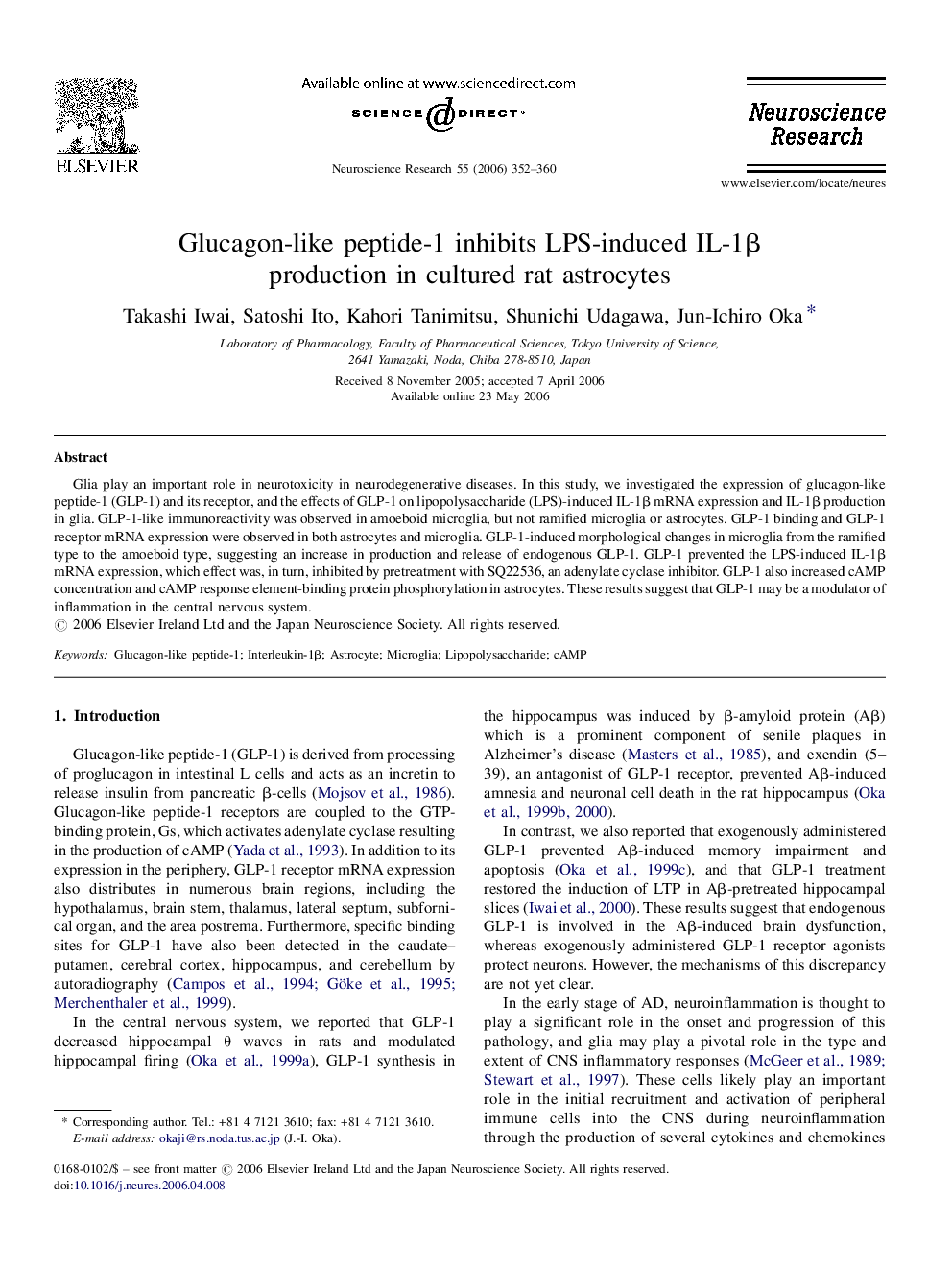| Article ID | Journal | Published Year | Pages | File Type |
|---|---|---|---|---|
| 4352548 | Neuroscience Research | 2006 | 9 Pages |
Abstract
Glia play an important role in neurotoxicity in neurodegenerative diseases. In this study, we investigated the expression of glucagon-like peptide-1 (GLP-1) and its receptor, and the effects of GLP-1 on lipopolysaccharide (LPS)-induced IL-1β mRNA expression and IL-1β production in glia. GLP-1-like immunoreactivity was observed in amoeboid microglia, but not ramified microglia or astrocytes. GLP-1 binding and GLP-1 receptor mRNA expression were observed in both astrocytes and microglia. GLP-1-induced morphological changes in microglia from the ramified type to the amoeboid type, suggesting an increase in production and release of endogenous GLP-1. GLP-1 prevented the LPS-induced IL-1β mRNA expression, which effect was, in turn, inhibited by pretreatment with SQ22536, an adenylate cyclase inhibitor. GLP-1 also increased cAMP concentration and cAMP response element-binding protein phosphorylation in astrocytes. These results suggest that GLP-1 may be a modulator of inflammation in the central nervous system.
Related Topics
Life Sciences
Neuroscience
Neuroscience (General)
Authors
Takashi Iwai, Satoshi Ito, Kahori Tanimitsu, Shunichi Udagawa, Jun-Ichiro Oka,
